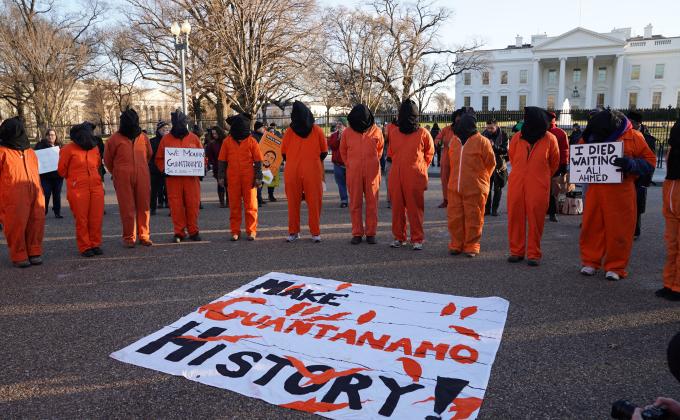Date: Thursday, 11 April
Location: Nieuwspoort, The Hague
As part of its Terrorists on Trial Research Project, ICCT convened a fifth seminar on the trial of Anders Behring Breivik on 11 April in The Hague. This Project aims to highlight the performative and communicative aspects of terrorism trials. In addition to the purely judicial aspects of Mr Breivik's trial, an analysis of the behaviour and communication strategies of the actors (in)directly involved have been important in shaping the wider sociological impacts of the trial beyond its judicial outcome. Beatrice de Graaf opened the meeting outlining the aim of the research project: to highlight not only the purely judicial aspect of terrorism trials, but also their performative and communicative dimensions, which is achieved through an analysis of the behaviour of the actors (in)directly involved.
This research project helps, in particular, to assess the role and impact of terrorism trials on society as a whole. Tore Bjørgo and Cato Hemingby (both from the Norwegian Police Academy) took a broad look at the process timeline - from the time of Breivik’s arrest to his sentencing - to assess the societal impact of the trial. The assessment of the suspect’s state of mind played an especially significant role in the strategies of the actors involved: Initially, a forensic psychology report declared Breivik schizophrenic and psychotic both during and after the attacks. This assessment came under heavy criticism not only by the accused himself who labelled it “the ultimate humiliation”, but also by others such as Bjørgo, who criticised it for lacking expert knowledge. Breivik’s rhetoric and behaviour during the trial were deliberate and aimed at influencing the outcome of a second psychology assessment and the overall verdict. “Breivik appeared less fanatic and pompous than he did earlier in the process”, Bjørgo noted.
This intentional strategy was also evident outside the courtroom; for example, Breivik had chosen his lawyer deliberately, just as he had described in his manifesto outlining his far-right militant ideology. However, he did not at all get the type of lawyer he described in the compendium since his attorney Geir Lippestad did not in any way act as an amplifier with regard to Breivik's political views. Overall, Breivik’s strategy was successful: He managed to publicise his compendium during the trial and avoided psychiatric hospital. As Hemmingby highlighted: “Since Breivik was undoubtedly guilty and had little to lose, he used the trial as a stage”. The prosecution was less successful in their perfomative strategy, which was mainly due to the contentious psychiatric reports.
The court as well as the defence lawyer, on the other hand, were viewed positively because they successfully upheld the rule of law, reinstalled faith and confidence in the judiciary, included victims in the process, and acted in a fair and transparent manner. Leiden University researchers Liesbeth van der Heide and Daan Weggemans reported on their innovative survey research, which they had conducted in Oslo during the time of Breivik’s trial. Their research largely confirmed the conclusions reached by the Norwegian panellists, with the general public approving the work of the court and of the lawyers involved by strongly sticking to set legal frameworks. Their research also explored the broader impact of the trial on Norwegian society as a whole. In a comparatively small country, there was considerable emotional and physical involvement by the Norwegian population; the trial did not create any more fear, but rather presented a coping mechanism.
The reaction by the government was also perceived as fair and adequate, which was important considering that restoring the rule of law and democratic values were viewed among the most important goals of the trial alongside the aim of prevention. Retribution, which is another classic goal of the Western criminal justice system, however, was generally not considered a crucial aim of the trial; it featured prominently only among non-Norwegian survey respondents. Unsurprisingly, a majority of those surveyed had lost their faith in psychiatry. In an overall assessment, van der Heide and Weggemans concluded that the performative aspects of the Breivik trial were complex with all stakeholders – the accused, the media, authorities and society – using the trial as a stage. The question-and-answer session highlighted some of the key issues discussed. One participant questioned if the reaction by Norway to the Breivik attacks would have been different if the perpetrator had been a radical Muslim rather than a right-wing extremist.
The panel responded that extremist movements have become much more diversified and complex since the 1990s. We have learnt that we should not blame whole groups for the actions of individuals and therefore, the reaction by Norwegian society would probably not have been significantly different. The panel particularly stressed how important a fair and transparent trial was to democratic values, prevention, coping mechanisms and stability. Regarding possible imitators, the panel acknowledged behaviour related to Breivik particularly from within Europe and remarked on the number of languages that Breivik’s manifesto had been translated into. However, Bjørgo noted in an overall assessment that “we don’t think that the trial has or will produce copy-cats, but we hope that it will instead produce copy-cat trials”. In closing the seminar, Prof. Dr. de Graaf echoed these remarks, that all terrorist trials are to some extent show trials: “The question is which type of show is being put on? The Breivik proceedings were a trial and show of justice”.



